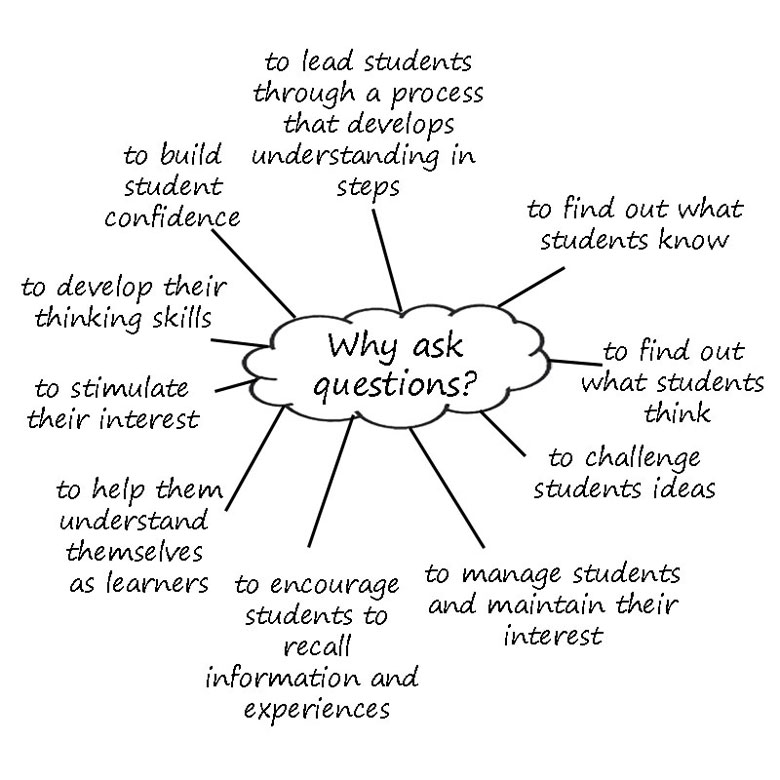x min read

“SQ3R Study Method: How to Master it”
Introduction
Studying is a long and boring process that takes hours of work and effort to master. Thankfully, there have been plenty of those before us who have discovered the best strategies to ensure that students today succeed with the time they have available.
Today, we’ll explore a new strategy that I stumbled upon: SQ3R.
Today, we’ll take a deep dive into it, how to actually do it step-by-step, why it works, and my personal opinion and experience with it.
After all, the strategies we review here at GG are only reviewed because we have attempted them ourselves.

“The gold beneath the sea worth more than you imagine”
Introduction to a New Series (unrelated)
Recently, we here at GraduationGurus came together and thought: “what if we start a new series completely focused on good study strategies and habits that students can implement to skyrocket their academic success?”
So, that’s exactly what we’ve started. For the next couple of months, we’ll create -occasional- posts on the best and most useful study strategies that you can implement in school to enhance your success.
This is episode 1 of a series we hope will transform your academic life as much as it did for us too.
What is SQ3R?
SQ3R stands for Survey, Question, Read, Recite, and Review. It is a systematic approach to studying and understanding academic material and was developed by Francis P. Robinson in his book “Effective Study” in 1946.
The SQ3R study method offers numerous benefits, including active engagement with the material, improved retention, efficient time management, enhanced comprehension, and effective preparation for assessments. By incorporating this structured approach into your study routine, you can transform your learning experience and achieve greater success in your academic pursuits.
Step 1: Survey
Surveying is the first step in the SQ3R study method. During this phase, your primary objective is to gain a comprehensive overview of the material you are about to study. Begin by looking through the entire text or chapter without diving into the details. Pay close attention to the following elements:
- Headings and Subheadings: These provide a structured outline of the content, giving you an idea of the main topics and subtopics.
- Bold or Italicized Text: These often highlight key terms or concepts that are significant to understanding the material.
- Visual Aids: Charts, graphs, diagrams, and illustrations can convey essential information visually.
- Introductory and Concluding Paragraphs: These sections typically provide a summary or context for the content.
Tips:
- While surveying, it’s essential to stay engaged and curious. Note any questions or points of interest that arise during this phase. For example, if you see a name or concept that you may have heard of before or sounded interesting when discussed by a friend, research it. Let curiosity take control.
- The goal is not to understand the material fully at this stage but to create a roadmap of what you can expect to encounter in the reading.
Step 2: Question
Once you have surveyed the material, move on to the questioning phase. This step involves formulating questions based on the content you’ve reviewed. These questions serve as your roadmap for the rest of your study session and help you approach the material with a purpose. Here’s how to formulate effective questions:
- Convert Headings into Questions: If a heading in the text is “The Solar System,” your question could be, “What are the key components of the solar system?”
- Address Main Concepts: Create questions that directly address the main concepts or learning objectives outlined in the material.
- Generate Specific Inquiries: Be precise in your questioning. Instead of asking, “What is this chapter about?” ask, “What are the three main stages of photosynthesis discussed in this chapter?”
Tips:
- Formulating questions actively engages your mind and primes it to seek answers as you read.
- Your questions should be clear, focused, and aimed at deepening your understanding of the material.

“Why do we ask questions? – A Short Review”
Step 3: Read
The reading phase of the SQ3R method is a pivotal step that requires a focused and active approach to comprehending the material deeply. During this stage, you immerse yourself in the text, paying close attention to the details, context, and structure. Here’s a more in-depth breakdown of how to approach the reading phase:
- Active Engagement: While reading, actively engage with the text. Avoid passively skimming over words. Read each sentence with focus and intention.
- Note-Taking: Take detailed notes as you read. Jot down key points, essential concepts, and supporting details. Use abbreviations and symbols to capture information efficiently.
- Highlighting and Underlining: Highlight or underline important information. This helps you identify crucial sections when you return for review.
- Annotating: Write comments or questions in the margins of your text. Annotating allows you to interact with the material, express your thoughts, and flag areas that require further exploration.
- Breaking it Down: Divide the reading into manageable sections or chapters. Set goals for each section and focus on understanding one segment before moving on to the next.
- Reflect: Pause periodically to reflect on what you’ve read. Ask yourself if the material is addressing the questions you generated during the questioning phase. Ensure that you can explain the concepts in your own words.
- Contextualize: Try to connect the new information to your existing knowledge. This helps you build a mental framework for understanding the material.
Tips:
- Engage actively with the text by asking yourself if the material is addressing your questions or if new questions arise as you read.
- If you come across complex or unfamiliar terms, make note of them and seek to understand their meanings.
Step 4: Recite
The recitation phase is a critical component of the SQ3R method, and is probably the most effective thing that you can do on this list. Here, you need to focus on reinforcing your understanding by actively processing and explaining the material. Here’s an in-depth exploration of how to approach this step:
- Summarize Aloud: After completing a section or portion of the reading, summarize what you’ve learned aloud or in writing. Pretend you are teaching the material to someone else. Use your notes and annotations as references.
- Paraphrasing: Avoid rote memorization. Instead, rephrase the material in your own language. This forces you to internalize the concepts and make them your own.
- Use Visual Aids: Create diagrams, concept maps, or charts to represent the information. Visual aids can be particularly helpful for grasping complex concepts.
- Elaborate: Don’t settle for surface-level explanations. Go beyond the basics and delve into the nuances of the material. Explain how different concepts relate to one another.
- Teach a Friend or Imaginary Audience: If possible, teach the material to a friend or imagine an audience. This approach reinforces your understanding and highlights areas where you may need further clarification.
- Identify Gaps: Pay attention to areas where you struggle to explain the material clearly. These gaps in your understanding are valuable indicators of what you should revisit during the review phase.
Tips:
- Recitation reinforces your comprehension and helps solidify your memory of the material.
- If you can’t explain a concept clearly during recitation, consider revisiting that specific section in your reading.
Step 5: Review
The review phase is the final and critical step of the SQ3R method. It serves to consolidate your learning, reinforce your memory, and prepare you for assessments. Here’s a comprehensive look at how to approach this step:
- Summarize Key Points: Go over your notes, annotations, and the material itself to identify and summarize the main points, concepts, and supporting details.
- Create a Condensed Summary: Develop a concise summary or outline of the material that distills the essential information. This condensed summary serves as a quick reference guide for your study sessions.
- Self-Testing: Test your knowledge by attempting to answer the questions you generated during the questioning phase. Quiz yourself without referring back to the text. This self-testing confirms your understanding and helps identify areas that may require further review.
- Flashcards and Concept Maps: Consider creating flashcards or concept maps to visualize the connections between different concepts and reinforce your memory.
- Identify Weak Areas: During the review, focus on areas where you faced challenges during recitation or self-testing. These areas may require additional attention and clarification.
- Periodic Revision: Regularly review the material, especially if it’s essential for ongoing courses or cumulative exams. Spaced repetition enhances long-term retention.
Tips:
- Regular review sessions reinforce your memory and ensure that the material remains fresh in your mind.
- Consider creating flashcards or concept maps to aid in your review process.
Benefits of SQ3R:
- Active Engagement: SQ3R encourages active reading and participation, making it easier to grasp complex concepts.
- Improved Retention: The method reinforces learning through repetition and summarization.
- Enhanced Comprehension: Breaking down the material into steps ensures a thorough understanding.
- Preparation for Assessments: SQ3R equips you with a structured approach for exams and quizzes.

“How studying with SQ3R Maximizes your Focus & Creativity”
Action Step
- Select Your Material: Choose a piece of academic material that you need to study or review. It could be a textbook chapter, an article, a research paper, or any substantial piece of content related to your coursework.
- Survey the Material:
- Begin by quickly skimming through the entire material without delving into the details.
- Pay close attention to headings, subheadings, bold or italicized text, visual aids, introductory and concluding paragraphs, and any other structural elements.
- Formulate a general sense of the content’s organization and main topics.
- Generate Questions:
- Based on your initial survey, create a list of questions related to the material.
- These questions should aim to uncover the main concepts, key details, and learning objectives.
- Your questions should be clear, specific, and focused on gaining a deeper understanding of the material.
- Read Actively:
- Begin reading the material attentively, keeping your questions in mind.
- Take comprehensive notes as you progress, highlighting key points and jotting down relevant information.
- Annotate the text with comments, questions, and insights.
- Divide the reading into manageable sections to maintain focus.

“How asking questions enhances Productivity”
Action Step (cont.)
- Recite and Explain:
- After completing each section of the reading, pause and verbally summarize what you’ve learned as if you were teaching it to someone else.
- Use your notes and annotations to guide your explanations.
- Paraphrase the material in your own words and elaborate on important concepts.
- Review Thoroughly:
- Once you’ve finished reading the entire material, review your notes, annotations, and the text itself.
- Summarize the main points, key concepts, and supporting details.
- Create a condensed summary or outline for quick reference.
- Test your understanding by attempting to answer the questions you generated without referring back to the text.
- Repeat and Adapt:
- As you apply the SQ3R method, you may find areas where you need to adjust your approach. Adapt and refine your strategy as needed.
- Practice SQ3R regularly to build effective study habits and enhance your comprehension and retention of academic material.
- Evaluate Your Progress:
- After using the SQ3R method for your study session, take a moment to reflect on your experience.
- Consider how it impacted your understanding, retention, and overall study effectiveness.
- Identify any challenges you encountered and seek ways to overcome them in future sessions.
My Personal Opinion & Experience
After attempting this method, I’d give this strategy a 5/10. It’s not bad, and it good in some ways, and bad in others.
First, I’ll start with the good.
What I really like about this strategy is how it incorporates study methods like teaching, condensing, and questioning all in one. It’s cool, and those three alone will give you a run for your money. With those three, you can get by a lot of tests, and score well on them too.
What I dislike is the sum of time it’d take to complete this entire 5-step process. I’ve actually done it prior to researching it, and all I can say is that it’s a great way to waste your time.
Elements such as manual summarizing, manual reviewing, reading, annotating, and deep analyzing is the complete opposite of efficiency is -pretty much- the equivalent to throwing your time in the bin. If you really cared about efficiency, and making the most of your time, I suggest staying away from this method, UNLESS you’re able to automate steps 3 and 5 using either another person or AI. In that case, it’d be completely different story.
But, if you plan on doing everything yourself, please don’t. There are other strategies that will be a greater opportunity to study using. Besides steps 3 and 5, the rest are great (reciting, debriefing, questioning, curiosity) and I highly suggest them.
Conclusion
In summary, the SQ3R study method offers a plethora of benefits, ranging from active engagement and improved retention to efficient time management and enhanced comprehension. This structured approach equips you with the tools to excel academically, develop critical thinking skills, and cultivate effective study habits that can benefit you throughout your educational and professional endeavors.



